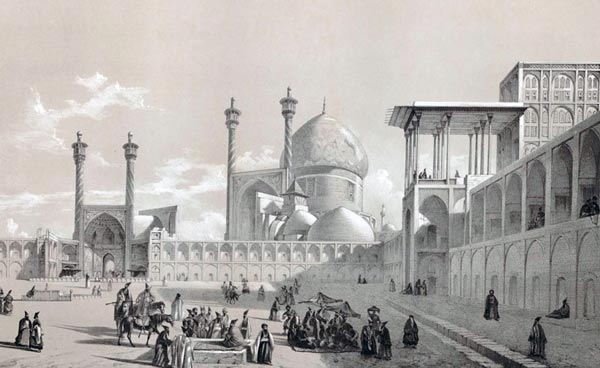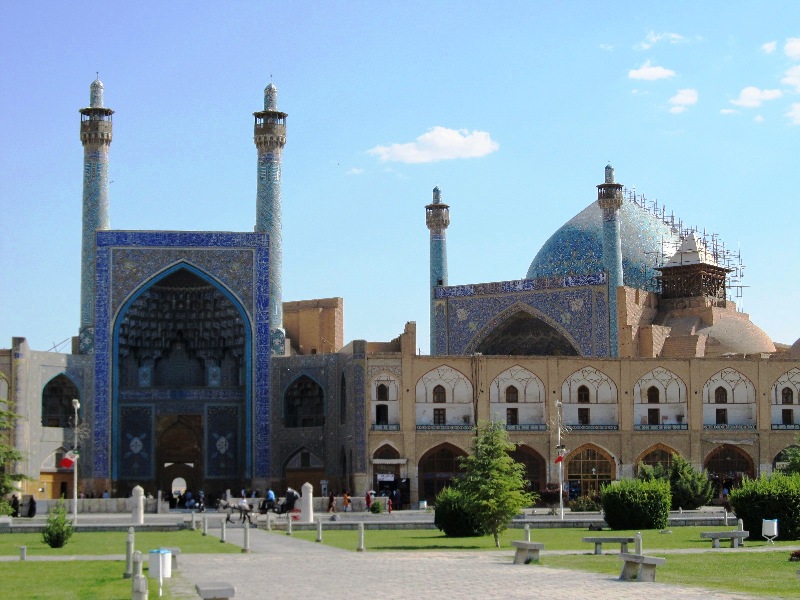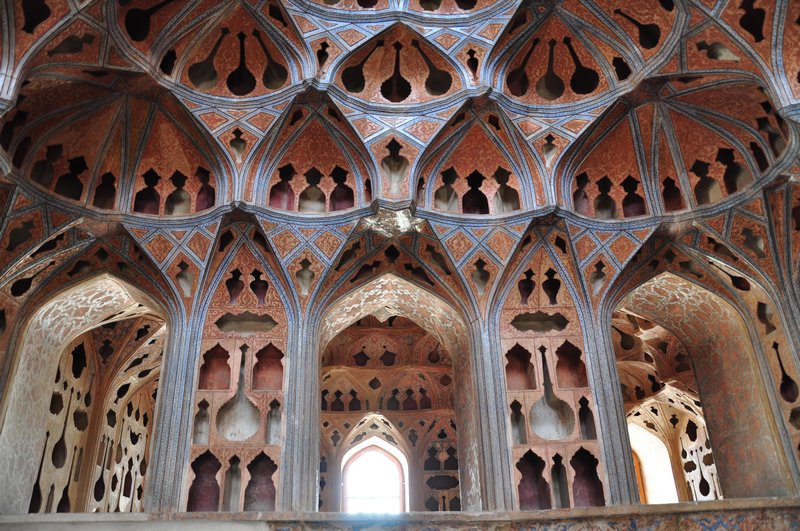At the center of the city of Isfahan, there’s a place that takes the breath of every viewer away with its unparalleled architecture. This place is Naqsh-e-Jahan Square, and its name translates into Image of the World. It also goes by the name of Meidan Emam and is one of UNCESCO’s world heritage sites in Iran. With four prominent buildings and rows of two-story shops, Naqsh-e-Jahan complex is a must-see tourist attraction for Iranians and tourists from all over the world. Continue reading to find out about the history of this magnificent Isfahan square and the famous attractions that can be found in it.
History

It was in 1598 that Shah Abbas decided to change the capital of Persia from Qazvin to Isfahan. Because of this change, he had to make sure that the city portrays the glory of the Safavid dynasty. Therefore, he remade the city, and in this process, the most magnificent Isfahan square came into existence. Since Naqsh-e-Jahan was part of a political plan, it had to show the harmony of different powers in the kingdom. These three powers were the power of merchants, religious figures, and the power of the king. That is why surrounding Naqsh-e-Jahan square, there are Sheikh Lotfollah and Shaah mosque (the religious power), Ali Qapu palace (the king’s power), and the Bazaar (the merchants’ power).
Shah Mosque

Perhaps the most prominent building of the square, Shah Mosque is located on the southern side of Naghshe Jahan. Shah mosque is also called Masjed-e-Emam, and to many, it is the greatest example of Safavid architecture. This ornate work of architecture presents the viewer with gorgeous mosaic tiles. Besides that, beautiful inscriptions by great masters like Alireza Abbasi and Mohammadreza Emami decorate the entrance hall and the Mihrab of the mosque.
When you visit Shah Mosque, you will see that there are two passageways that are different in length. The master architect of the building designed this so that the mosque would be on the right axis with Qiblah (the direction of Mecca). Shah Mosque has two halls on the eastern and western side of the interior. Although the eastern hall is larger in size, the western hall is more decorated and beautiful to look at. There are also two schools for religious education in this famous Isfahan square, and they are both worth a visit.
Sheikh Lotfollah Mosque

Sheikh Lotfollah is the other Mosque in Naqsh-e-Jahan Complex. It’s much smaller in size and less glorious than the Shah Mosque. However, it’s still breathtakingly beautiful. Sheikh Lotfollah was a mosque that was specifically designed and built for the women of the harem. In other words, it was a private mosque, whereas the Shah mosque was the public one.
Due to its private function in the central isfahan square, Sheikh Lotfollah does not have any minarets, and its exterior is not designed in a majestic way. However, the interior of the mosque is no less magnificent than Shah mosque. The tile work is as exquisite, and the the domes strikes the viewer with awe. The most astonishing design in the interior, however, is the design of a peacock at the center of the dome. What makes this peacock one of a kind, is that its shape gets complete only when the rays of sun enter the mosque and become the tail of this creature.

Ali Qapu Palace
On the west side of Naqsh-e-Jahan, the most spectacular Isfahan square, stands the entrance to the royal residential of Safavid era. The term Ali Qapu consists of the Arabic word Ali meaning high and the Turkish word Qapu meaning portal. Ali Qapu was a place of multiple functions. On one hand, it was the place in which royal banquets were held; on the other hand, it was the place from which the king observed games of cricket held on Naqsh-e-Jahan.

The building has multiple halls in different floors, all of which have their own unique functions. For example, the banquets took place on the sixth floor; therefore, this floor has the largest rooms. Furthermore, the architecture of the sixth floor was precisely designed so that music could have the best effect possible. That is why this floor goes by the name of the music room. There are a large number of naturalistic works by Reza Abbasi, one of the most famous illustrators of the Safavid era, embellishing the walls. Overall, the design and architecture of Ali Qapu make it a great example of Safavid architecture.
Qeysarriyeh Gate

Naghshe Jahan is the perfect place to do your souvenir and sweets shopping. There are not only a plethora of shops scattered around, the entrance to the city’s Bazaar is also located on this vital Isfahan square. It stands great and magnificent at the northern side of the square and welcomes people from all around the world.
The 2 kilometers Qeysarriyeh Bazaar is one of the longest roofed markets in the world. It connects the old square (Atigh Square) of Isfahan to the new square (Naghshe Jahan Square). Qeysarriyeh specializes at selling carpets and rugs, but it is also a fantastic place to shop for souvenirs while enjoying the pleasant traditional atmosphere.